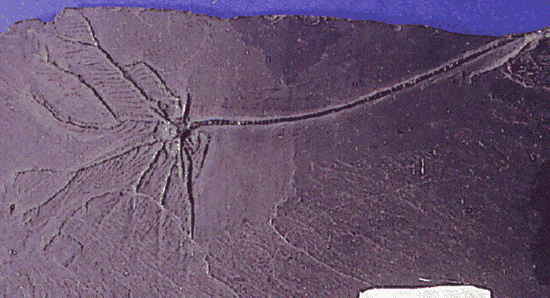



Echinodermata: Fossil Record






The oldest known echinoderm may be the Vendian fossil Arkarua, found in southern Australia. It was soft-bodied but may have had some sort of unmineralized plates on its body. The Vendian fossil Tribrachidium may have been related to the echinoderms, but this is still debated.
Echinoderms in the modern sense, with mineralized skeletons, entered the fossil record in the early Cambrian. Homalozoans and eocrinoids were prominent in the Cambrian; other Cambrian echinoderms included the unusual helicoplacoids. Asterozoans (starfish and brittle stars) appeared in the Ordovician, as did the earliest echinozoans. The oldest asterozoans (the Somasteroidea) show characteristics of both starfish and brittle stars; starfish and brittle stars probably diverged from a common somasteroid ancestor. The later Paleozoic was dominated by crinoids and blastoids; shown here is Agriocrinus, a crinoid from the Devonian Hunsruck Slate of western Germany. Some Paleozoic limestones are made up almost entirely of crinoid and blastoid pieces. All blastoids and most crinoids went extinct at the end of the Permian period. Asterozoans and echinozoans have been the most prominent echinoderms ever since. Holothurians (sea cucumbers) are common echinoderms today but have a sparse fossil record.


